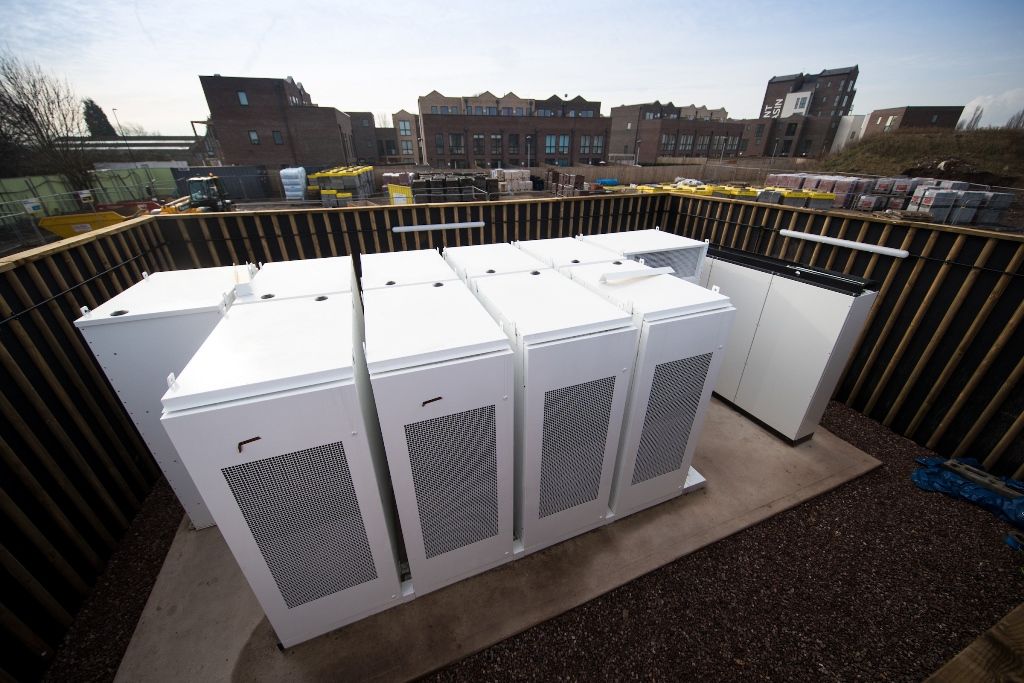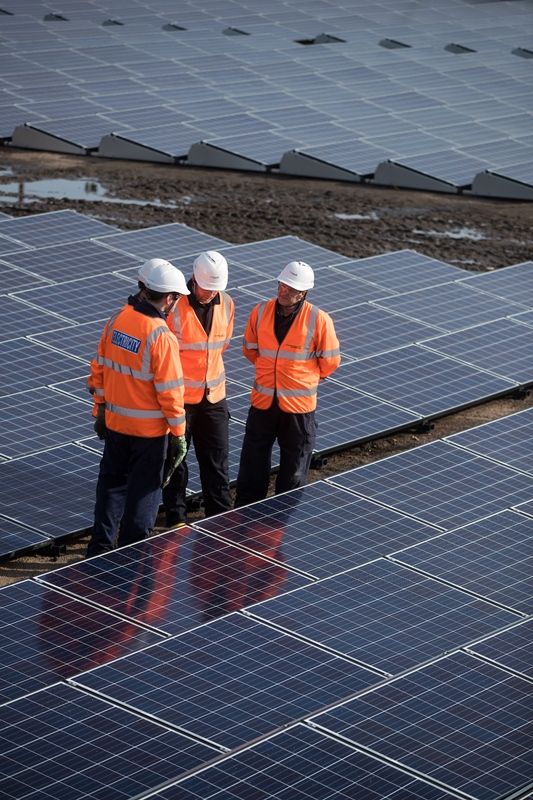Charging up - Energy storage in the spotlight
Battery power has the potential to transform the electricity industry – but that doesn’t mean energy storage is completely straightforward…here’s the WPD thinking so far.
As dawn broke on the first day of the 21st century, the fundamental issue the electricity industry had faced since its beginnings remained intact: despite some pioneering attempts to store hydro-electric generation there was no way of storing the bulk of the power that was generated.
Fast forward to 2018 and there’s a budding battery market that has the potential to help the country deliver on climate change commitments.
Potential is the key word, as WPD Primary System Design Manager Tony Berndes points out: “The battery energy storage market is still in its infancy for electricity distribution where we are starting to see an increasing number of schemes connect to the network. The fact the market can mature rapidly is evidenced by National Grid’s focus on fast frequency response.
“It’s now becoming clear to everyone involved in this technology that there are emerging markets in place. What’s less clear is the way they are going to develop.”
Battery units at Trent Basin.
Domestic
In the Furzton area of Milton Keynes, WPD is currently running a trial as part of its LV Connect & Manage project. Volunteer householders are using batteries to store the power generated from their solar panels. At full capacity, the batteries are able to store enough energy to power a two-bedroom home for a day.
That’s important because, as the nation moves towards increased take-up of electric vehicles, the question of how they are to be charged is becoming critical.
Over a year the power an electric vehicle requires is equivalent to the amount of electricity an average home uses. In March 2017 there were 37.5 million cars on the road and 27.2 million homes. Not all cars will be replaced by new electric vehicles but the projection that domestic customers will need to consume twice as much electricity as they currently do is not unreasonable.
That throws up more questions. Firstly, how do you ensure the electricity to power both homes and cars is available? Traditionally, the industry would have looked at the potential peak demand of homes and cars and then built the infrastructure to ensure it could be delivered, even though for the majority of the year that peak would never be reached.
The level of network investment required could easily run into billions of pounds, which would have a consequential impact on consumer bills.
Network operators are working on other options. One possibility is to shift the time period when customers could charge their cars to favour overnight or other off-peak times. Another is to encourage publically available charging network, enabling cars to charge through the day away from homes, thereby avoiding the peak period.
Another question is where the power is to come from. It seems illogical to swap petrol and diesel cars for cleaner electric vehicles if they can’t be supported by renewable generation.
Early indications from the Furzton trial are that participants are impressed with the savings the solar panel and battery combination deliver. Long-term this type of technology could be instrumental in helping customers to keep bills static as their usage increases.
Verdict: The current barrier to widespread take-up is the upfront cost of the equipment. Although prices are dropping, there is still some way to go before they are an affordable option for most households. For the moment better use of existing electrical infrastructure is a more economical option.
Community
Earlier this year WPD provided a connection for the Trent Basin development, home to Europe’s largest community energy battery.
The 500kW (2.1MWh) Tesla battery system stores the energy produced by the site’s dedicated 700-photo-voltaic unit solar farm and will also cater for a further 900 panels that will be installed on houses as they are built.
The project was the first of its kind in the region but hasn’t been the last. 11kV Planner Lee Barnett, who managed the connection request, said: “Other customers are learning from this project and combining low carbon technologies to create community focused energy distribution. This has led to connection applications for a further five similar smaller scale projects in our region.
“Potentially the learning from the project could benefit millions of customers worldwide by changing the way energy is produced and consumed within communities.”
WPD’s Network Strategy Team Manager Ben Godfrey agrees that the potential of community energy storage is enormous.
“As customers become more active in how they generate and consume energy, projects like Trent Basin will offer us a wider range of options to keep the lights on.”
Verdict: High technology costs have been a barrier but an increasing number of local authorities are looking for schemes that have a low carbon footprint. They are also proving popular with buyers. As a result, more developers are looking at the options: expect this form of battery storage to boom.
Solar panels at Trent Basin.
Constraints
These are the areas of the network where at peak times the levels of future demand could exceed the capacity available or where the amount of electricity that could be generated is greater than the capacity of the network to transport it to where it’s needed.
Constraints can cause delays for customers wanting to connect to the network or increase the amount of electricity they use as operators have to reinforce it. For generators, constraints mean the power they could generate can’t be exported onto the network at peak times.
Traditionally, a power plant whose generation was not needed would simply not generate and the fuel it would have burnt would be saved for another day. But for wind and solar, whose generating ability depends on the weather, the inability to export onto the network means potential low carbon electricity is lost, never to be recovered.
Solar in particular tends to be at maximum generation when demand on the network is low and the power it can provide isn’t required in the locations where it’s being generated.
Placing batteries at constraint points to store energy at times of peak generation and release energy at times of peak demand seems to be a logical solution if the country is to increase the amount of renewable electricity it uses but currently the market is not ready.
Tony Berndes explained: “Understandably, investors are looking for fully flexible connections that will offer them maximum revenue on their investment across multiple services, rather than being limited to one aspect of what the local network requires.
“At the moment the commercial and market arrangements that will leave all parties satisfied are not fully developed.”
But if the country is serious about meeting climate change targets it can’t afford to waste renewable generation. Co-locating batteries and solar farms is an obvious solution – and one Ofgem promotes through Renewables Obligation Certificates.
Verdict: Financial issues mean battery storage to solve constraints is a tough nut to crack. Co-location is a more exciting prospect.
Want more info on the Trent Basin project? Go to: www.projectSCENe.co.uk
- Innovation
